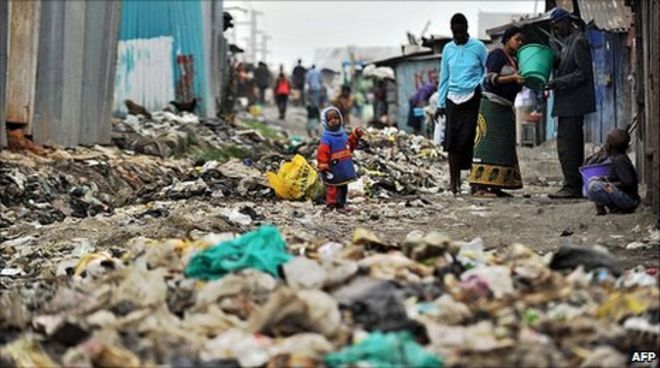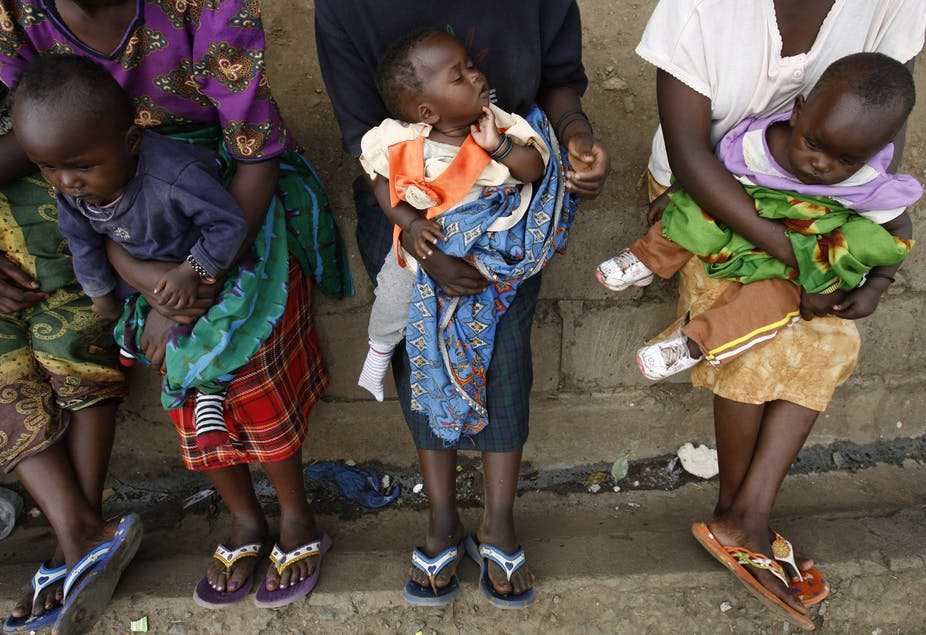Today, across the globe, nearly one billion people live in slums and informal settlements in about 100,000 cities – about a quarter of the urban population.
The thought of getting old, retiring and still living in a slum used to scare Emma Ochieng. Now the 55-year-old primary teacher has a new house on an estate about a 45-minute drive from the city of Kisumu in western Kenya.
For over 20 years, the single mother of one lived in Kisumu’s overcrowded Nyalenda slum, polluted by poor drainage, waste, noise and high crime rates.
“Staying in a decent neighbourhood was beyond my means,” Ochieng told the Thomson Reuters Foundation. “Owning a house in the city was but a wild dream!”
But in 2015, she began contributing 500 Kenyan shillings ($4.95) per month to the Nyalenda Housing Cooperative, part of the Kisumu Local Urban Forum which helps members in five of the city’s slums access decent housing.
Ochieng also joined Kenya’s National Cooperative Housing Union (NACHU), an umbrella body that builds affordable homes for low-income earners on estates known as “greenfields”.
With people migrating from rural areas in search of jobs as local farm business suffer from extreme weather and rising food imports, the rapid pace of urbanisation has pushed 56 percent of Kenya’s city dwellers into slums.
“Informal structures are coming up faster than government planning,” said George Wasonga, CEO of the Civil Society Urban Development Platform. “People are moving into areas before the government can offer infrastructure for basic services like roads, water, sewer connections, electricity and security.”

Today, across the globe, nearly one billion people live in slums and informal settlements in about 100,000 cities – about a quarter of the urban population.
Many are located on riverbanks or near dump sites and industrial areas, often on degraded soils and in swampy, steep or flood-prone areas susceptible to disasters.
Poorly constructed homes expose communities to extreme temperatures, a lack of ventilation and toxic waste – all detrimental to their health.
Of the 10 million more people added each year to sub-Saharan Africa’s urban population, 7 million end up in slums. Only 2 million of them can expect to move out to a better environment, according to figures quoted in a 2016 U.N. report on slums.
SAVINGS GROUPS
Ochieng is one of the lucky ones. She got the key to her two-roomed house in April 2016, enabling her to leave the Nyalenda slum.
Jessica Wekesa, NACHU’s Nyanza regional coordinator, explained how the cooperative assists people to save on a small scale so they can acquire their own land and homes.
In groups of 20, they identify a suitable parcel of land. NACHU then conducts a background check and helps them register the land, also making a loan for its purchase.
The organisation constructs starter homes of two rooms with a bathroom and kitchen, and hands them over to the owners, who can expand their property into a three-bedroom house.
Over a few years, the client pays for the land, the starter home and related services at a 14 percent rate on the reducing balance of their loan, after which they get the title deed.
In the past seven years, NACHU and its partners have built about 2,000 housing units in seven regions of Kenya for low-income earners, ranging from small traders to motorcycle taxi operators and teachers.
“We use cheap, locally available technology,” said George Kopallah, coordinator of the Kisumu Local Urban Forum. “We have been using bricks made from sand mixed with water and exposed to high heat.”
Ochieng said each member of her group was expected to save at least 140,000 shillings, which took her about a year.
Ochieng’s house cost 704,000 shillings, including her share of the communal land on which the homes were built. She expects to secure her title deed by April 2019 after paying back her loan.
Meanwhile, she has also borrowed money from the bank to extend her sitting area with iron sheeting.
Esther Akinyi, a 41-year-old mother of two, said the micro-savings group had helped her cope with unpredictable income from her printing and design business.
“As a widow, bearing the family burden on your own can be draining at times,” she said.
The loan from the group allowed her to cover school fees, while building up her business – although she won’t expand her home until she has paid back what she owes.
NATIONAL PUSH
As cities around the world expand, local leaders and activists at the World Urban Forum in Kuala Lumpur this week are working out how to make them more inclusive, safe, resilient and sustainable, in line with global development goals.
The New Urban Agenda, adopted by U.N. member states in 2016, recommends that governments should put housing at the centre of national and local development policies.
Kenya’s government intends to construct 200,000 social homes to improve living conditions for the poor in slums, and 800,000 affordable houses for better-off families over the next five years.
The private sector will cover 60 percent of the overall cost of 2.6 trillion shillings, with 30 percent coming from the National Social Security Fund and 10 percent from the treasury.
As part of this effort, the Kisumu County government intends to build 10,000 social housing units using imported prefabricated panels of fibre cement and galvanised steel.
As yet unnamed private investors will fund the project, says the county government, which plans to set aside special economic zones offering free land to developers to reduce the cost.
For now, in Nyalenda, 40 families have benefited from new homes, while the cooperative has secured 5 acres (2 hectares) of land to put up 100 more units.
Nyalenda Housing Cooperative Chairman Valentine Odhiambo said the aim was for its 325 members – around two-thirds of them women – to have “a place not just to call home but within a non-hazardous environment, protecting them from extremes of changing climatic conditions and pollution”.
In the meantime, Ochieng is much happier than she was in the slum, where she spent at least 600 shillings each month buying water to cook and do laundry.
Now she has cut her water bill by almost a third, and has enough for a shower and a toilet – and even to irrigate her vegetables.
“Though it’s been a long journey, it’s a rewarding journey,” she said. “My future and that of my daughter is secured.”

